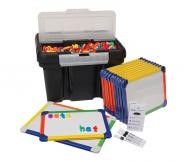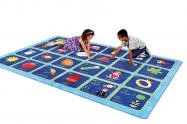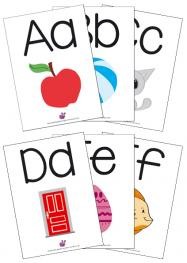What is Phonics?
The past few years has seen a change in the way children are taught to read in schools. Phonics is recommended as the preferred way children are taught so they can understand, and learn how to read and spell. Phonics teaches children to be able to listen for sounds and identify the phoneme that make up each word. They help children to sound out words so they can start reading and writing them.
There are three stages to teaching phonics with children - GPCs, blending and segmenting.
GPCs stands for grapheme phoneme correspondences. This means children are taught all the phonemes in the English language and ways of writing them out. They are taught in a particular order often start with the most common ‘sounds’ s, a, t and p.
Blending is when they are taught to say the sounds that make up a word until the word becomes clear and they can hear what the word is. This skill is vital in the early reading stages.
Segmenting is the exact opposite of blending. This is when children are taught to break up a word by the phonemes that make it. This helps them to learn to spell the words.
It is important with early years learning activity to keep it fun, and short. 15-20 minute sessions each day will help keep children’s attention, interaction and passion for learning.
Simple ideas that everybody can accomplish can work wonders with children’s confidence which, in turn, can increase motivation to learn.
Here are 5 fun ways you can teach phonics and doesn’t require too much preparation:
Beginning, Middle & End
Start by drawing a chart on the whiteboard which divides up three sections for the beginning, middle and the end.
Start with one specific sound and read out words that contain the sound. The children can then decide if the sound was found in the beginning, middle or at the end of that word. This is great as a group activity and really helps improve listening skills and helps children work together.
Letters on The Board
Firstly, write some letters down on the board. Then read out a word, one at a time, and ask the children to try and spell the word using the letters on the whiteboard. Once they have had a go at spelling the word, it is important to write the correct spelling down so they can visualise it. Do this for around 5 words, each time writing down the correct spelling. Try to limit the number of vowel sounds you practice as the variety of sounds they represent can be really challenging for children, especially beginners.
I Spy Game
It can take a long time for children to be able to hear the sounds in words. The ‘I spy’ game has been around for a long time and is great for supporting children in recognising the sounds in words. Instead of playing a truly challenging game of ‘I Spy’ where you can refer to anything within sight, try putting a collection of items in a box, this narrows down the amount of options available. Of course, they need to be items children will be able to recognise. Allow children to take turns in selecting their own items in the box for challenging other children. This is great for group interaction, and everyone loves playing ‘I Spy’.
Matching Initial Sounds
This is where you use a letter, this can be a picture of a letter, a magnetic letter or anything similar. Then ask children to find objects around the room that begin with that letter. Create different sections for different letters. This is great as a class activity and can really help the children to engage with each other. Once they find an item they place it in the correct section. At the end you can discuss each item in detail - what it is, how and why it was chosen and they can have a go at spelling it or sounding it out.
Creating Simple Words
This can be done using magnetic letters or just cut out card letters. Provide the children with a picture of something easy to spell such as cat, dog, bat, and ask the children to use the letters to spell out the word.

Our classroom show and tell rigid board classroom packs are great for this. The magnetic option comes with 288 letters and 288 numbers so the children can learn to spell out words using these.
Our classroom lapboard range is perfect for teaching children to learn to read and write.

The alphabet classroom mat can be used for group interaction learning games. The rectangular rug has been designed with Key Stage 1 literacy in mind and can help with letter and word recognition.

Our alphabet free resource pack contains a set of 26 letters with illustrations as well as an alphabet writing sheet that helps children to develop their reading, writing and phonics skills. It’s free to download and you can choose to download individual letters, or the entire alphabet.
We are experts in early years’ education resources including classroom furniture, school dining furniture and school play equipment. For more information about our products, please contact us or call us on 01733 511121.
Permalink:
https://www.earlylearningfurniture.co.uk/blog/phonics-activities-with-children.aspx